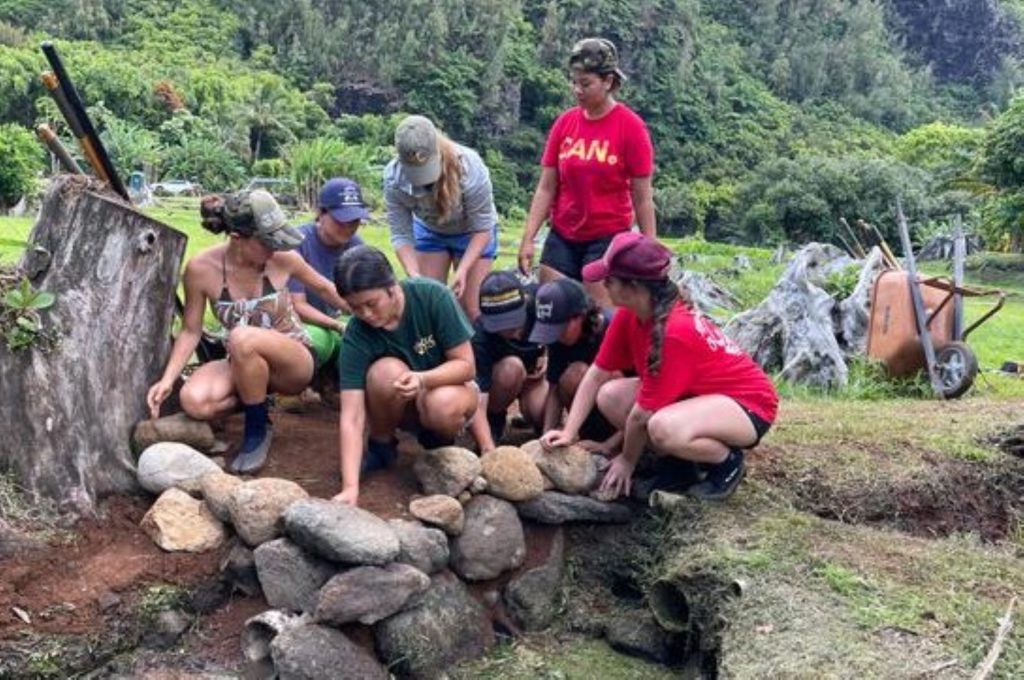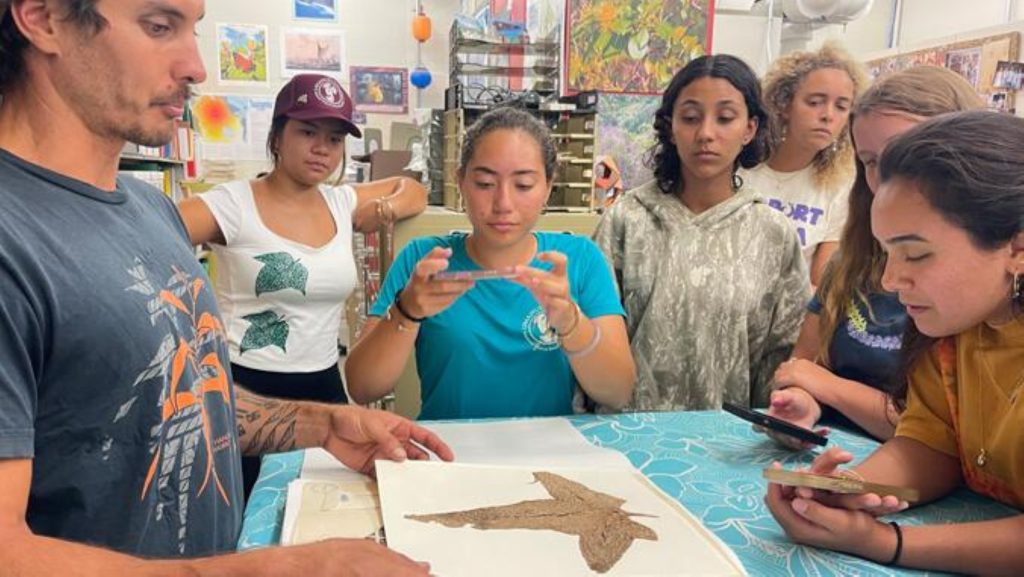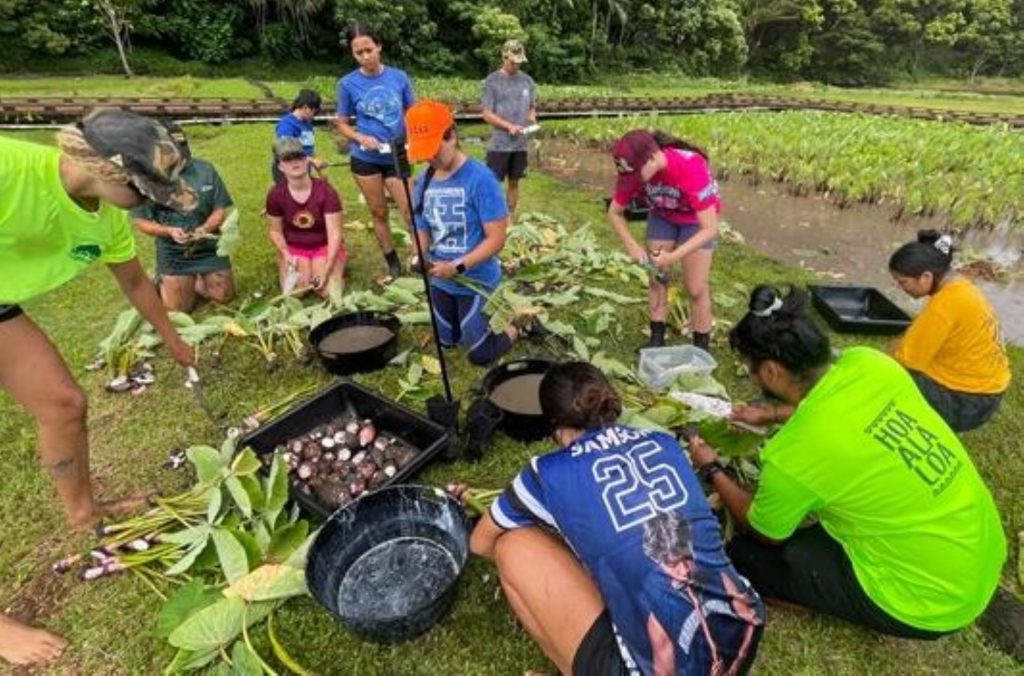Kaua‘i place-based science internship fosters community collaboration, future leaders
Nine high school and college students spent the past 5 weeks in Hāʻena exploring career and college pathways in natural science, conservation and food security through the Nā Pua Noʻeau program, which for the past 30 years has provided cultural enrichment opportunities for keiki through the University of Hawaiʻi.
These students performed community service work with Limahuli National Tropical Botanical Gardens and Hui Makaʻāinana o Makana during a monthlong paid internship.
They also received 3 college credits toward sustainable science management through Kauaʻi Community College.

Four days a week were spent working with experts in the field in Hāʻena, learning about environmental engineering, policy building, botany and horticulture while also working with cultural practitioners.
One day out of each week focused on studies at Kauaʻi Community College.
The intensive summer internship culminated at the Hawaiʻi Conservation Conference on Oʻahu.
Nā Pua Noʻeau Kauaʻi Program Director Mālia Chun said the beautiful thing about working with the people and organizations of Hāʻena is what it symbolizes in community-based stewardship.
Hui Makaʻainana o Makana is a community-based organization formed by lineal descendants of Hāʻena.
They work with the state and Limahuli Garden and Preserve to manage and restore the upper Limahuli reserve, loʻi, poi mill and other historical sites in the area, as well as manage the community-based subsistence fishing area.
These organizations work together to manage the ahupuaʻa, or land division, of Hāʻena as a whole in an effort to preserve culture and natural resources. Tourism to these areas also has been managed by limiting daily visitors.
Chun said this type of collaboration to create equitable tourism in a small community and care for the ahupuaʻa can be an example for the rest of the islands.
“As someone from Kauaʻi, I’ve seen how the burden of tourism has affected the small community and its resources,” Chun said in a release about the 5-week place-based summer internships. “This initiative and partnership have really become an example of how community-based stewardship is effective, and is a great model for other small communities in Hawaiʻi who feel overburdened, and these interns get to see and experience this system up close.”
She said when you bridge the gap of traditional knowledge and modern-day science, “you are able to more effectively care for our ʻāina.”

The main adviser for the summer program is Kauaʻi Community College instructor for sustainable science management Kama Chock, who said the first week of the program consisted of building pilina, or connection, with Hāʻena, the people, work and plants there.
The following weeks gave students a plethora of educational opportunities, such as learning about different plant and soil nutrient cycles on a global scale with a community-specific focus in regard to examples such as climate change.
“I think that’s something that is really special about community-based management and building pilina with place,” Chock said in the release. “We are able to come up with non-cookie-cutter solutions to environmental problems. This model of college overlap with community work is the future of education in Hawaiʻi.”
Loea Keanaʻaina is headed to Oregon State this fall as a freshman and said the internship helped her narrow down her college pathway to conservation and environmental engineering.
She knew she wanted to go into environmental science, but wasn’t entirely sure until they learned about the ʻauwai, an open channel irrigation system for agriculture, primarily used for loʻi kalo.
“I’m going to see what pathways open up, but I want to do research and be a scientist, or engineer, or maybe both,” Keanaʻaina said in the release. “I want to travel and learn and help out where I can, but I want to eventually come back here and take everything I’ve learned and try to implement it here.”
Kealaula Perry will be a senior at Kamehameha Schools Kapālama in Honolulu this year and said this program was very eye-opening for her because she grew up in Lāwaʻi Valley and never spent much time on Kauaʻi’s North Shore.
The summer internship helped her narrow down her interests to water engineering and cultural engineering.
“I think it was super interesting to see how different organizations work together to accomplish a goal, like Hui and Limahuli have a main goal of preserving the same area,” Perry said in the release. “They worked with the community-based subsistence fishing area and the state to eventually accomplish their goals, and it’s really interesting to see how they work together. For example, how the data from fish monitoring affects the broader description of Hāʻena.”

Perry said an experience she really enjoyed was hiking into Limahuli to study olonā — a very rare and endangered Hawaiian plant used for cordage.
“We saw plants we’ve only ever heard stories of,” Perry said. “It’s cool to see how they’re revitalizing native plants and re-establishing the cultural practices attached to them.”
She is “super grateful” for the internship experience and opportunity, especially as someone who doesn’t visit that side of the island often.
Nā Pua Noʻeua was established in the late 1980s to create a pipeline for Native Hawaiians to attain post-high school degrees. Chun has worked with these supplemental educational programs via Nā Pua No’eau since she went through the University of Hawaiʻi system.
“One of the reasons I helped to plan this internship is because I want these students to see themselves as part of a succession plan,” Chun said in the release. “When they meet these experts in the field, I want them to see themselves in these professions. There is a way for them to make a living wage at home doing what they love, and we need more Native Hawaiians represented in the natural science and conservation fields.”



